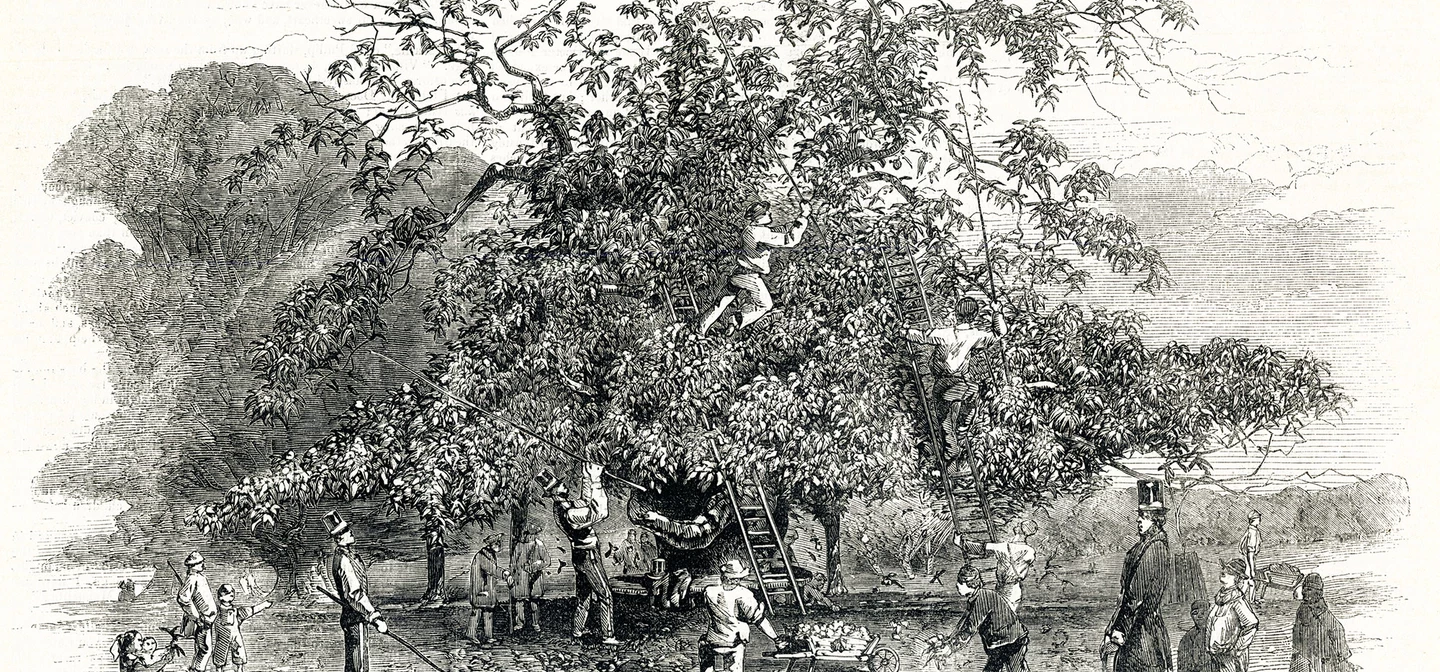
Queen Elizabeth Oak in Greenwich Park
Greenwich Park boasts thousands of trees, but a very special specimen is easily the most famous.
The celebrated tree known as Queen Elizabeth’s Oak is hundreds of years old. Dendrochronology - a scientific technique analysing tree rings - has recently shown that it dates from 1292!
The tree sadly died in the nineteenth century but remained standing until 1991, when it fell during a storm. You can still see it in the Park, though, where it is marked with a special plaque.
Over the centuries, many tales have been told about this legendary tree. As its name suggests, some of these stories have a royal connection.
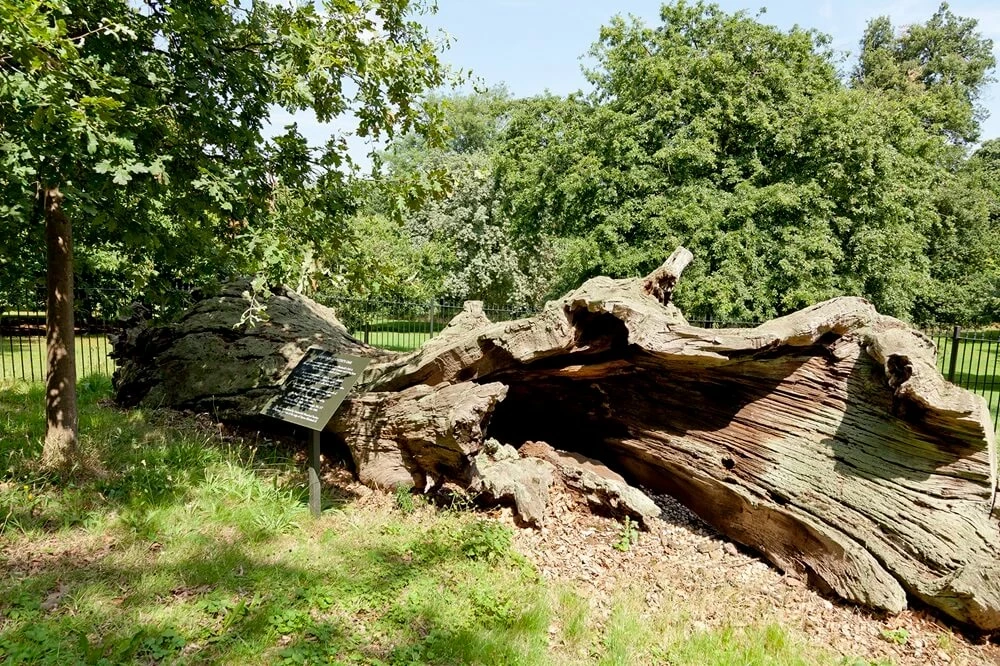
'The Lay of the Old Hollow Tree'
An atmospheric poem about Queen Elizabeth’s Oak appeared in the West Kent Guardian on 2 July 1853.
The Tudors
King Henry VIII was born at Greenwich Palace. He spent much of his time in the park, where he enjoyed feasting and jousting.
Greenwich Park also provided a backdrop to some of his many relationships. Legend has it that he once danced with Anne Boleyn – the second of his six unfortunate wives – around the base of the oak tree.
However, it is the daughter of Henry and Anne – Queen Elizabeth I – after whom the tree is named.
There are several reports that the young Elizabeth enjoyed picnicking in the shade of this large oak tree – although some stories have a slightly different twist, suggesting that she picnicked inside the tree’s hollow trunk!
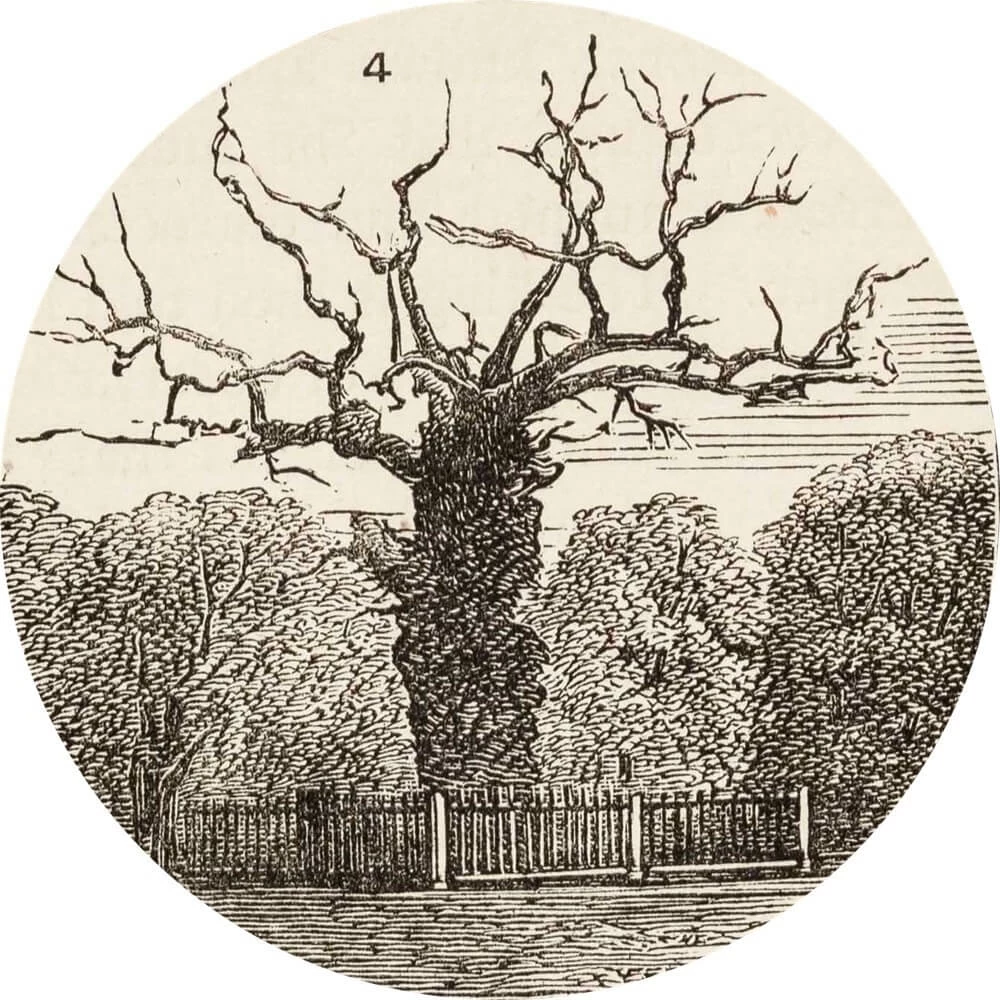
It is certainly true that the trunk was hollow. In the nineteenth century, this proved a convenient place to keep those who were misbehaving in the park – essentially turning the tree into a prison! Its location, close to the old keeper’s cottage, made it an ideal site for this.
In 1853, an anonymous writer submitted a long poem about this famous tree to the West Kent Guardian. It included the lines:
They call me the Old Hollow Tree,
In truth it so appears,
For I have been a hollow tree
Above a hundred years.A terror, oft my name has been
To schoolboys and to thieves,
Who, chestnuts have been knocking down,
Or damaging the trees.For my old trunk, is made into
A prison with a door,
And many times has had confin’d
Young urchins half a score.And many are the darksome deeds
That I could tell of old,
Of robberies, and murders too,
Would make the blood run cold.
Threshing the Chestnuts
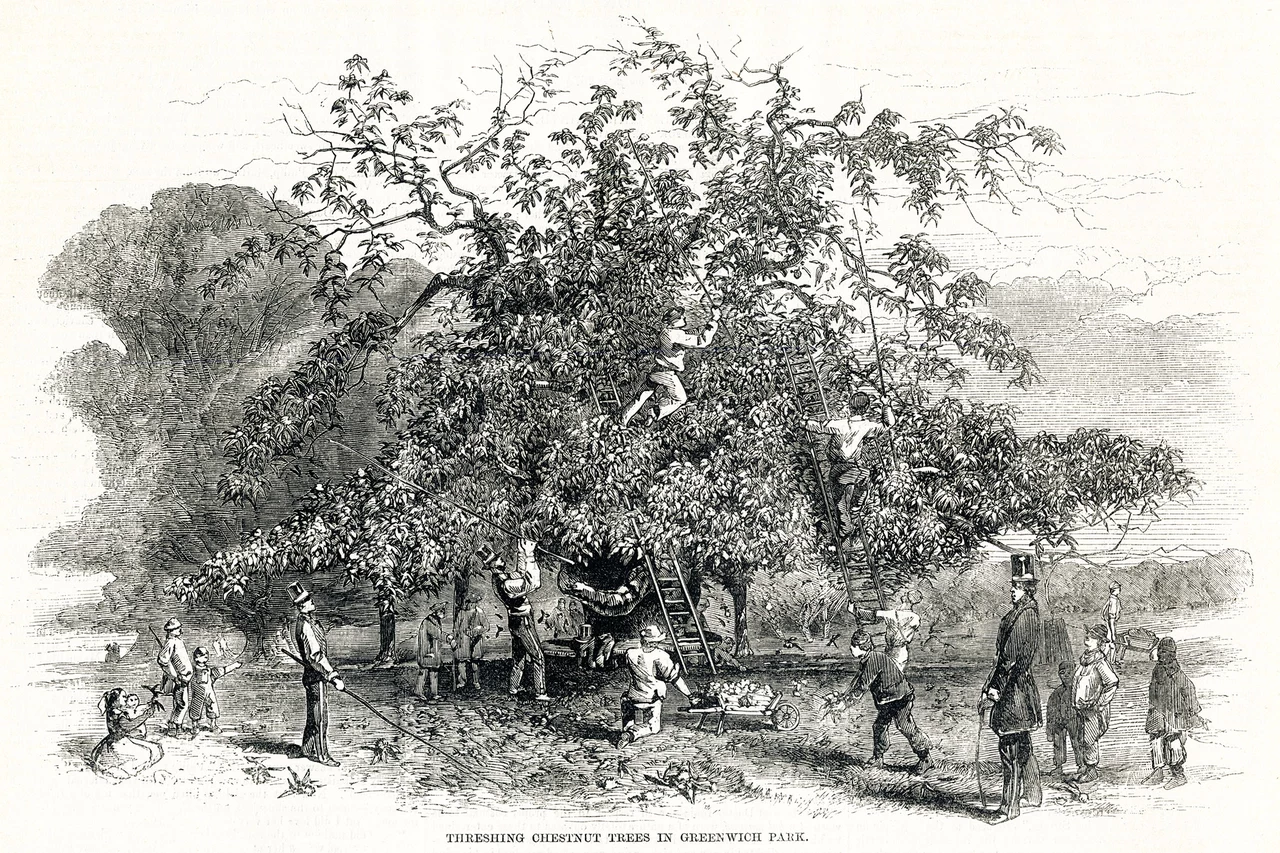
The poem above refers to mischievous visitors ‘knocking down’ chestnuts. The chestnut trees of Greenwich Park were a great attraction for local boys, who flocked to the park in autumn to thresh the trees – an activity that was vividly illustrated in a newspaper of 1857.
A report accompanying the illustration described the scene:
One of the greatest days of the year for the youthful inhabitants of Greenwich has passed away. The chestnut-trees in the Park have received a sound threshing, according to annual custom, and, also according the annual custom, have wept chestnuts by the cart-load. All Greenwich is husky; and more than one lad has been carried home [over-full].
At the moment when the accompanying sketch was taken, we saw one misguided young fellow perfectly fascinated by a choice bunch of nuts descending just within his reach. His gaze was long and intently fixed upon them, He was drawn irresistibly toward them. He was lost! For, his appetite stimulated to a pitch which rendered him utterly regardless of consequences, he made a sudden dash at the bough, and got the chestnuts and the keeper’s cane at the same moment.
For three weeks past the park-keepers had hard work to keep the park, for legions of boys poured in daily, desperately seizing every opportunity of filling their pockets. The risk was great, but how great the temptation!
Related Articles
-
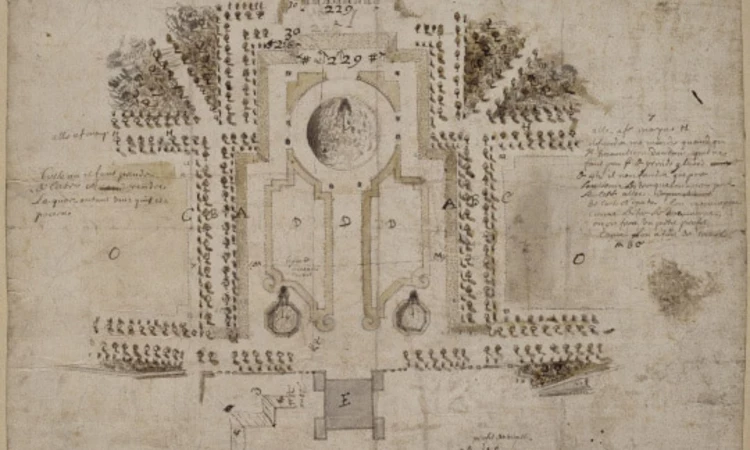 Read
ReadA Royal Landscape at Greenwich Park
In the 1660s, King Charles II (1639 – 1685) had Greenwich Park redesigned to an ambitious scheme known as ‘The Grand Plan’.
-
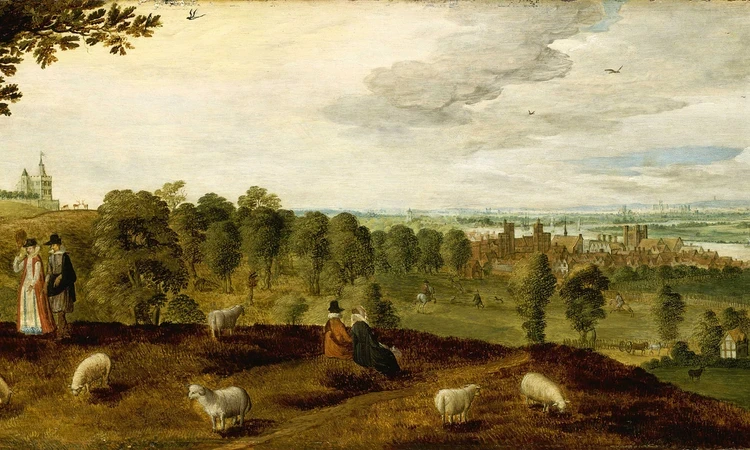 Read
ReadGreenwich Park in Art
For centuries, artists have flocked to Greenwich Park armed with sketchbooks, palettes and canvases.
-
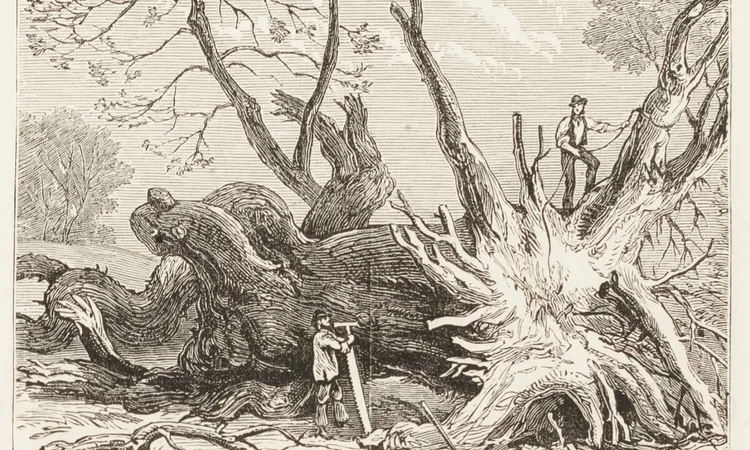 Read
ReadTrees through time at Greenwich Park
The trees of Greenwich Park have had a lot to contend with over the years - from weather and war to squirrels and stargazers!